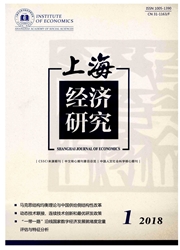

 中文摘要:
中文摘要:
该文认为,我国农村人口的半城镇化是与我国经济的快速增长伴随在一起的。基于此观点,该文对我国农村人口的半城镇化问题进行了实证研究,结果表明:当外地劳动力流入达到一定规模时,劳动力流入地的经济会跃上一个新的台阶,此时农村人口半城镇化的副作用并不明显;当劳动力流入地的经济增长放缓乃至衰退时,半城镇化的农村人口(劳动力)会出现回流,这种人口回流达到一定规模时,会导致该地区经济的急剧下滑。该文对我国1980—2013年农村人口流动相关数据的实证分析表明,工业化是我国农村人口半城镇化的触发条件,服务业的发展是我国农村人口半城镇化趋势不断增强的主要驱动因素。该文进一步分析认为:我国农村人口的半城镇化所造成的居民消费不足导致了我国服务业的层次低、发展水平相对落后、良性自循环功能欠缺。当工业开始向地区外转移时,会引发劳动力回流,这可能会引致逆城镇化和"中等收入陷阱"等风险。
 英文摘要:
英文摘要:
Theoretical analysis of Chinese rural semi-urbanization shows that when the labor inflow reaches a certain size,the economy will enter into a higher level and the side-effect of semi-urbanization is not obvious.In turn,when economic growth slopes down,the labors will flow back and there probably is a rapid economic decline.Based on the data from 1980 to 2013,the empirical analysis indicates that industrialization triggers semi-urbanization and service industry becomes the main driving factor. However,the semi-urbanization leads to the inadequate labor consumption,therefore low development level of the service sector and the shortage of self-circulation within the service industry.The labor shift and then the outflows may cause inverse-urbanization and " middle income trap".
 同期刊论文项目
同期刊论文项目
 同项目期刊论文
同项目期刊论文
 期刊信息
期刊信息
